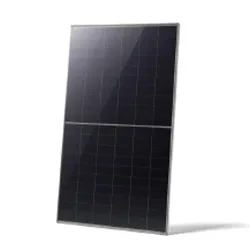Exploring the Benefits and Applications of Bifacial Solar Panels in Renewable Energy
Bifacial solar panels represent a significant advancement in solar technology, designed to harness sunlight from both sides of the panel. This innovative approach allows these panels to capture reflected sunlight from surrounding surfaces, enhancing their overall efficiency. As the demand for renewable energy increases, bifacial solar panels have become a popular choice among solar enthusiasts and energy investors.
One of the most compelling features of bifacial solar panels is their ability to produce more electricity compared to traditional monofacial panels. Typically, bifacial panels can yield 10-30% more energy, depending on environmental conditions and installation orientation. This increased efficiency stems from their dual surface design, which captures light that reflects off the ground and nearby structures. For instance, installations in snowy or sandy areas can significantly benefit from elevated albedo, which is the measure of how much light is reflected by a surface.
Moreover, bifacial solar panels are often more durable than their monofacial counterparts. Many are built with more robust materials to withstand environmental stressors, which can lead to a longer lifespan and lower maintenance costs. This durability contributes to a more favorable return on investment, making them appealing for both residential and commercial installations.
bifacial solar panels

Installation flexibility is another advantage offered by bifacial solar panels. They can be mounted at various angles to optimize sunlight exposure and can be solar-tracking systems that follow the sun’s path throughout the day. This adaptability allows for increased capture of sunlight, further enhancing energy production. Moreover, bifacial solar panels are highly versatile; they can be installed on rooftops, ground mounts, or even integrated into building designs, aligning with modern architectural trends.
While the benefits of bifacial solar panels are numerous, there are also challenges to consider. The initial cost of bifacial technology can be higher than that of traditional panels. However, the long-term energy output and savings often offset the upfront investment. Another consideration is that optimal performance requires careful planning regarding site selection and installation, as reflection efficiency can vary widely depending on environmental factors.
In conclusion, bifacial solar panels are a promising development in the solar energy landscape. Their ability to generate additional energy from both sides, combined with their durability and versatility, make them an attractive option for those looking to harness solar power efficiently. As the technology continues to evolve and more installations demonstrate their benefits, bifacial solar panels are likely to play a crucial role in the transition to renewable energy, contributing to a more sustainable future. With ongoing advancements, they are set to become a cornerstone of solar energy strategies worldwide.
-
Unlocking Energy Freedom with the Off Grid Solar InverterNewsJun.06,2025
-
Unlock More Solar Power with a High-Efficiency Bifacial Solar PanelNewsJun.06,2025
-
Power Your Future with High-Efficiency Monocrystalline Solar PanelsNewsJun.06,2025
-
Next-Gen Solar Power Starts with Micro Solar InvertersNewsJun.06,2025
-
Harnessing Peak Efficiency with the On Grid Solar InverterNewsJun.06,2025
-
Discover Unmatched Efficiency with the Latest String Solar InverterNewsJun.06,2025







